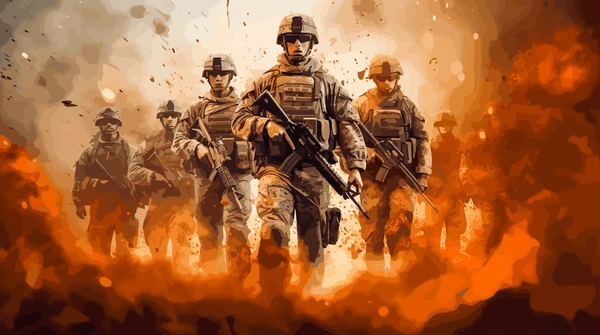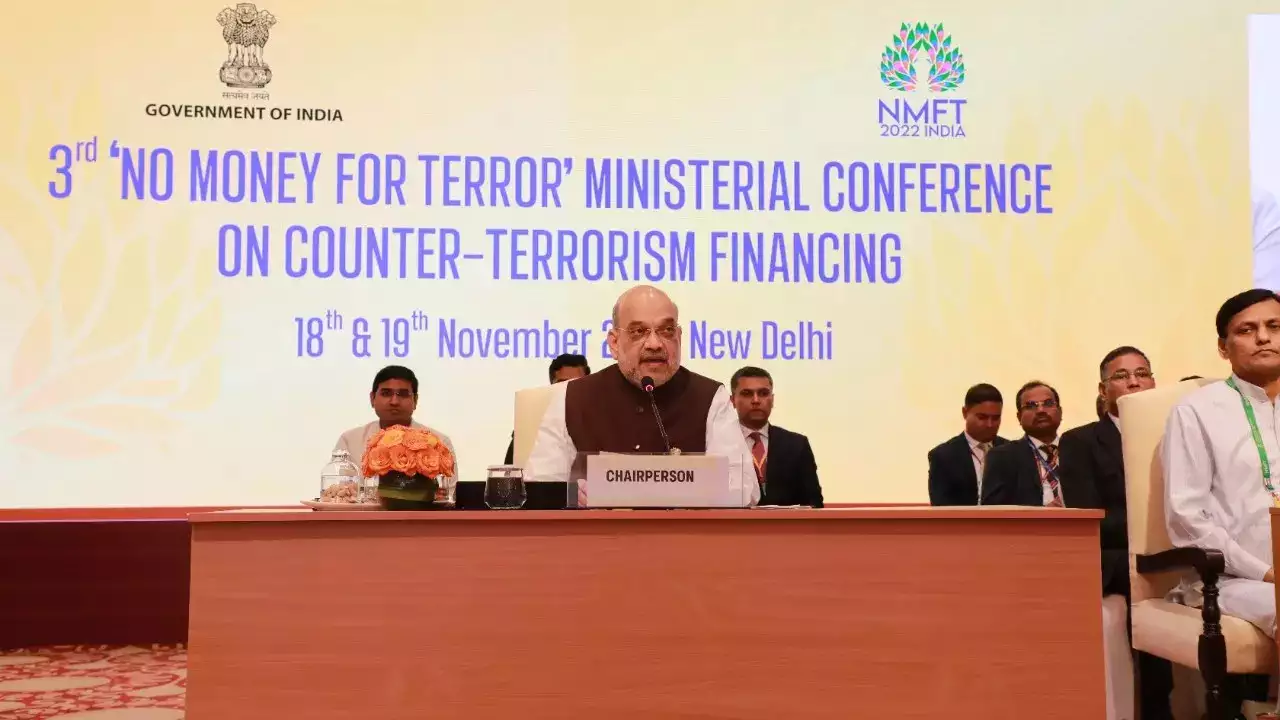India, we have been facing this for more than four decades. Earlier, we we faced with the problem of insurgency in north-east India while dealing with the Naga and the Mizo rebels and the terrorism of the Naxalites in Bengal Today, terrorism is perceived as a problem capable of destabilizing not only national but also international politics. Terrorism in recent times has affected both the developed and the developing countries. What has made terrorism significant instrument for achieving desired goals and ends by persons using the terrorist techniques are factors like conviction in the purity of the 'cause', fanatical loyalty, desire for self-sacrifice, a sense of absolutism, and financial and material support from abroad.
The Concept
The words terrorism, insurgency, civil war, revolution, guerrilla war, intimidation and extremism are most often interchanged and used very loosely. What is common in all is 'violence'. Terrorism is an organized system of intimidation. It is broadly defined as "violent behaviour designed to generate fear in the community, or a substantial segment of it, for political purposes. It is also defined as "a method whereby an organized group or party seeks to achieve its aims chiefly through the systematic use of violence" (Encyclopedia of Social Sciences).

The UN General Assembly Resolution 49/60, adopted on December 9, 1994, contains a provision describing terrorism: "Criminal acts intended or calculated to provoke a state of terror in the general public, a group of persons or particular persons for political purposes are in any circumstance unjustifiable, whatever the considerations of a political, philosophical, ideological, racial, ethnic, religious or any other nature that may be invoked to justify them."
According to the UN Security Council Resolution 1566 (2004), the term 'terrorism' includes criminal acts, including against civilians, committed with the intent to cause death or serious bodily injury, or taking of hostages, with the purpose to provoke a state of terror in the general public or in a group of persons or particular persons, intimidate a population or compel a government or an international organization to do or to abstain from doing any act.
Terrorism is characterized by a technique of perpetrating random and brutal intimidation, coercion, or destruction of human lives and property, and used intentionally by subnational groups operating under varying degrees of stress, to obtain realistic or illusory goals. The main characteristics of terrorism are:
- it is against the state or community,
- it has a political purpose,
- it is illegal and unlawful,
- it aims at intimidating and creating impact of fear and panic not only for the victim but also for the people at large, caused for the purpose of coercing or subduing,
- it is accompanied by a feeling of impotence and helplessness on the part of the masses,
- it stops rational thinking,
- it leads to reaction of fight or flight, and
- it contains arbitrariness in violence as victims' selection is random or indiscriminate.
Objectives
The goals of terrorists may vary from movement to movement but the main objectives of terrorism are the same in all terrorist movements. These are: (1) cause the regime to react and also to overreact. Reaction is required to compel the government/community to concede the demand of the terrorists. Overre action or indiscriminate reaction is required to demonstrate the repression by the regime so that the people are alienated and their sympathy is achieved. The security forces used by the government (because of overreaction) to protect the VIPs and the public installations will reduce the amount of security forces available to protect the general public, which will enhance their feeling of insecurity and helplessness and also increase the sense of terror amongst them; (2) mobilize mass support and urge potential sympathizers to greater militancy, or increase the involvement of more people. In a foreign territory, the objective of terrorist activity is to influence people rather than win friends. The chief objective in these places is a show of strength and to demonstrate the incapacity of the regime to protect people and maintain order; (3) eliminate opponents and informers and remove threat to the movement and also ensure obedience of the followers; and (4) give publicity or magnify their cause and strength.
five basic short-term objectives of political terrorism:
(i) morale building within the ranks,
(ii) advertising the movement,
(iii) disorientation and psychological isolation of the people,
(iv) elimination of opposing forces, and
(v) provocation of the government Mass Support
What is the nature and extent of mass support to the ideology, goal and methodology of the terrorists? Many a time it happens that the masses accept a particular ideology but not the goal, or they accept the goal but not the strategies of the proponents of terrorism. Even when one agrees with the goal, he may not support the movement or may not go beyond a certain point. Thus, the quantity and quality of mass support varies from one terrorist movement to other terrorist movement. Verma (Tiwari, 1930: 233) has given some indicators of the characteristics of mass support. These are: supporting the ideology or cause, agreeing with methodology, providing money and material, nonviolent participation in rallies, supplying arms and ammunition, providing shelter or harbouring, vocal or written (in media, etc.) support, and active participation in movement (violent support). Verma has also arranged these indicators in ascending order and has given three types of civil strife: terrorism, insurgency and revolution. According to him, terrorism is charac- terized by very little mass support but the participants go all the way from ideology to extreme violence. Insurgency or guerrilla warfare is characterized by the small number of insurgents or guerrillas supported by a very large segment of population. This happens when the cause is removal of colonial rule or resisting a foreign ruler. Revolution is characterized by much larger number of participants and mass uprising.
Support Base
The success of terrorism depends to a large extent upon its support base which to only the political and social support but also support by money weapons and training. Terrorists obtain money from different sources like not donations and taxes from people, through bank robberies, by smuggling and selling drugs, and collecting ransom for hostages and hijacked planes Weapons are often looted from people snatched from police stations or or purchased from abroad. For example, the PLO rebels acquired weapons from the Arab states, China and the Soviet Union. The Khalistani terrorists got and Kashmiri militants are still getting both training and weapons from Pakistan A state like Tamil Nadu in South India has once again become active after 1993-94 ethnic violence in Sri Lanka. The ethnic linkage of the Tamils provides local sympathy for the Sri Lankan Tamils in India. The militant activities of the LTTE have become a nuisance for one or two of our southern states. It has now been established that the LTTE militants were responsible even for the assassination of Rajiv Gandhi on May 21, 1991.
Terrorism in India
India is among the 25 least peaceful nations to live in, according to the Global Peace Index, 2013. The country was placed 141 among 162 nations having last more than two lives a day or a staggering 799 persons to internal conflicts in 2012 (Times of India, June 12, 2013).

Terrorism in India is essentially the creation of politics. The four types of terrorism India had/has to face are: Khalistan-oriented terrorism in Punjab, militants' terrorism in Kashmir, Naxalite terrorism in Bengal, Bihar/Jharkhand, Chhattisgarh and Andhra Pradesh, and the ULFA terrorism in Assam. Earlier we had faced this problem in Nagaland (1951), Mizoland (1966), Manipur (1976), Tripura (1980) and (of Gorkhaland) in Bengal (1986). The Sikh terrorism in Punjab was based on a dream of a "theocratic state through secession"; the Nagaland and the Mizo terrorism was based on the "identity crisis"; the Manipur and Tripura terrorism was based on "the grievance situation," and the Naxalite terrorism in Bengal Bihar/Jharkhand and Andhra Pradesh is based on "class enemity". There are, at present, as many as 66 terrorist/separatist groups active across the country, according to the Union Minister of State for Home. At least five of these outfits, viz., Laskar-e-Taiba, India Mujahideen, Hizbul Mujahideen, Harkat-ul-Jihadi and Al Badr, have presence across the hinterland, particularly Delhi, Maharashtra, Gujarat, Karnataka, Kerala and Rajasthan. The similar number of groups are operating in Jammu & Kashmir, with LeT and Hizbul Mujahideen topping the list, ten are active in Assam, Meghalaya and Nagaland The Indian Model
India has been facing severe problems of violence and terrorism since the 1960s. The insurgency in the north-east in the 1960s and the 1970s was tackled by the government more through political methods. The violence in Jammu & Kashmir also falls more into the category of insurgency rather than pure terrorism. 'Operation Blue Star' of the military on June 6, 1984 in Punjab and 'Operation Black Thunder' in Assam designed to counter terrorism totally failed. They were anti-terrorist measures (implemented mainly through the police forces and partially through the military forces) rather than counter-terrorist measures. The hallmark of the policies in the former measures are: frequent road checks, sentries at vulnerable points and elaborate security for the VIPs. The countries which supply the bulk of arms, or give shelter to terrorists or finance terrorism have not been called to account. Even there, the emphasis is on passive measures like border fencing or lodging mild protests. No wonder, even after 50 years, India has not been able to control terrorism. The government in most cases succumbs to the demands of the terrorists as happened in Kashmir, Andhra Pradesh and Bihar
Sociology of Terrorism
How does terrorism disrupt the political system or social organizations? How does terrorism act as a method for hastening social change? How does terrorism explain the social relationship between a frustrated minority and the ruling political elite, or between a group which feels deprived and a group which has the monopoly on the use of force? A holistic sociological perspective of terrorism will be possible only when we discuss large-scale political events not only in aggregate numerical terms but also in impact terms, that is, we focus not only on quantitative macropolitics but also on qualitative micropolitics.

Terrorism demoralizes and demobilizes populations and disintegrates societies, though it is also true that terrorism in some instances serves as an integrative mechanism binding people together in a common cause. Terrorism may involve the problem of law and order, that is, of killing or kidnapping of one group by other group because of its religious affiliations or sub-cultural differences, but it does not disrupt the social systems. Nor is terrorism a special method for hastening historical change. No terrorist movement has ever succeeded in achieving its goals. Terrorists, therefore, do not shape the course of historical events.
Terrorism